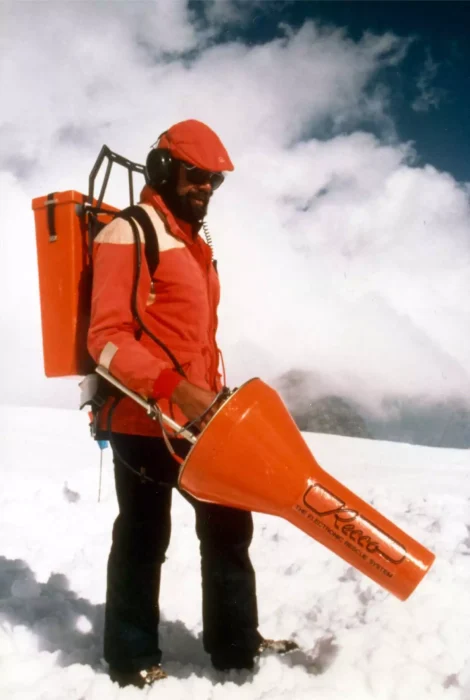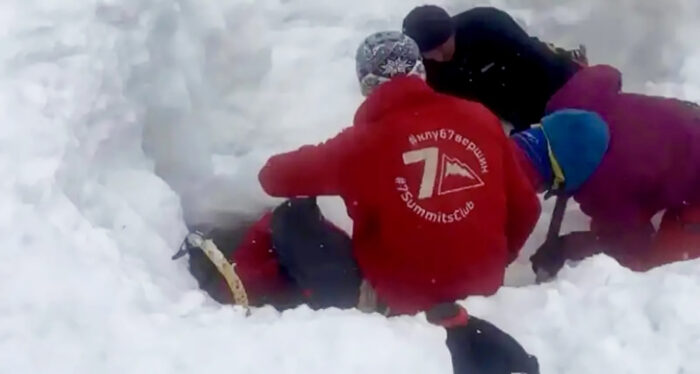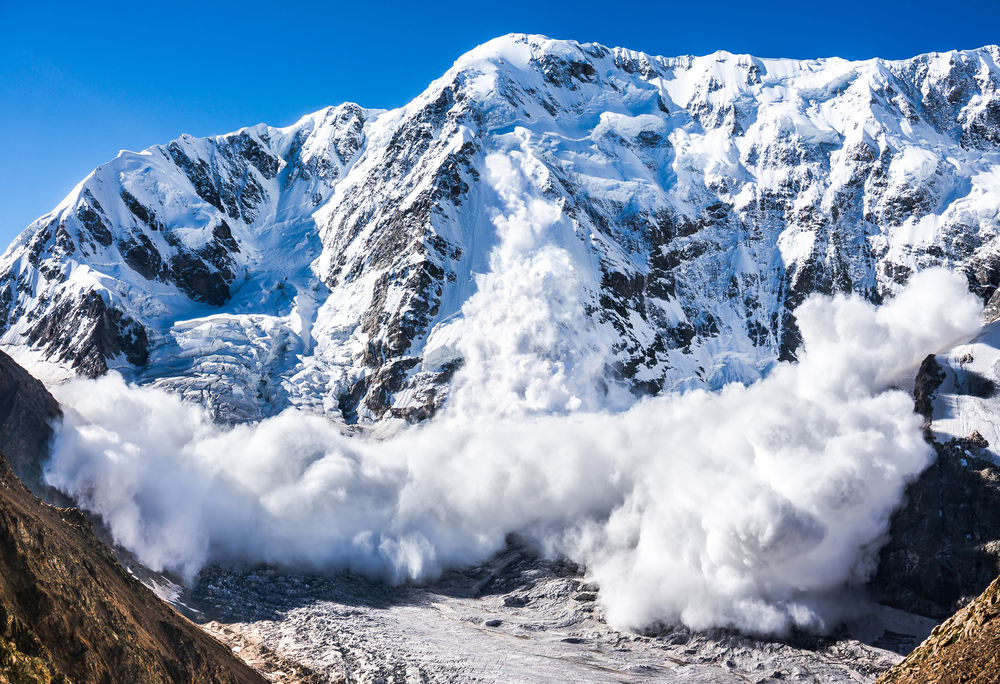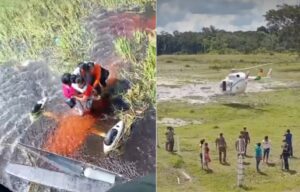In 1981, today’s most-pervasive avalanche rescue technology only existed as an emerging solution to detect tumors.
RECCO arrived in the avalanche safety world thanks to one man who’d lost a friend in the alpine. And it did so quietly — the earliest receivers only produced a peep on transponders from about a meter away. They were too cumbersome to be practical in the field and clearly too limited to make an impact on rescues.

The original RECCO detector, the R1. Photo: RECCO.com
Fast forward 40 years to today, and RECCO reflectors are virtually everywhere. Signals cut through 20 meters of snow or 80 meters of air.
It’s elementary that mountain rescue looks different now than it did then. But is it more effective?
1,643 victims
That was the inquiry in one broad, recent survey of avalanche rescues in Switzerland from 1981-2020. In it, lead author Simon Rauch and his colleagues comb through 1,643 avy disaster records in search of patterns. The authors broke the data down into two sets: the period from 1981-1990 and the overall period (1981-2020).
They discovered that rescues got faster and survival rates climbed overall. And though emergency responders are far faster now than in the ‘80s, you’re still significantly better off if your own team comes to your aid.
Generally, a “critical avalanche burial” (like those in the study) occurs when a victim’s head and chest are completely buried in snow. For obvious reasons, these avalanche subjects benefit from fast rescues. Disregarding all other circumstances or injuries, a human trapped in avalanche pack snow can suffocate in 15 minutes.
In avy rescue, speed has always been the name of the game. And operations that took 10 minutes or less “remained high” in success rate throughout those 40 years of data, the report found. Survival at 130 minutes or more also increased.
Companion rescues averaged 15 minutes from 1981-1990. The average drops to 10 minutes over all four decades. Rescue professionals sped up significantly more: down to 90 minutes on average from 153 minutes.
Overall survival increased slightly.
- From 1981-1990, 43.5% of victims survived.
- During the entire study period, 53.4% survived.
The report stopped shy of correlating results with specific activities, instead pointing to improvements in field techniques and medical technology.
And Mother Nature still makes the rules. Every avalanche rescuer, the report urged, should work fast.

Rescuers try to dig out a victim of a 2024 avalanche on Khan Tengri. Photo: Aikyn.kz
“In this study, the risk of dying from suffocation between 10 and 30 minutes of burial remained unchanged over the past four decades,” it cautioned, “highlighting the greatest challenge in the search and rescue of [buried] individuals…The time window for a successful rescue is short and should be considered by all educators, stakeholders, and manufacturers of avalanche safety equipment.”





